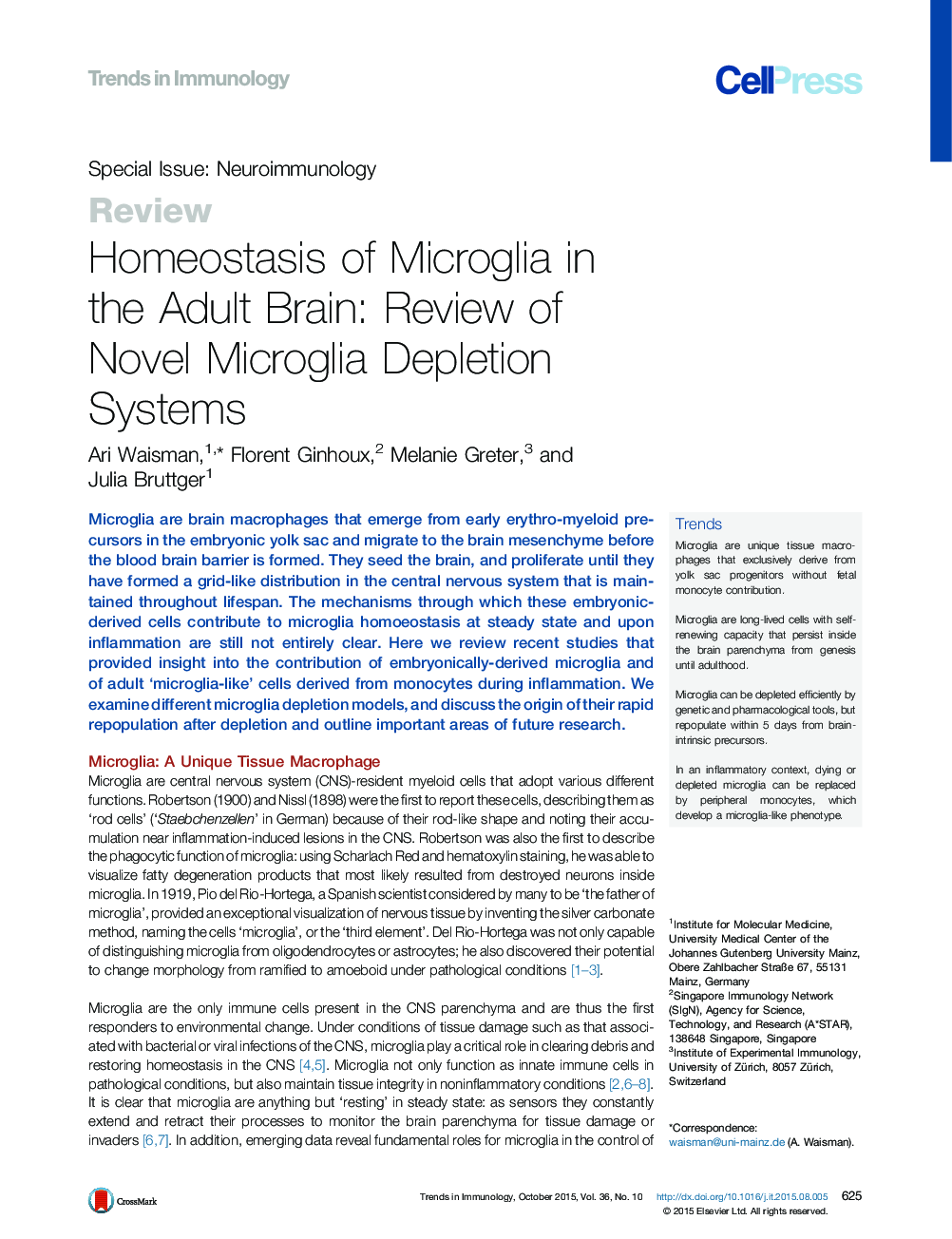| Article ID | Journal | Published Year | Pages | File Type |
|---|---|---|---|---|
| 4359742 | Trends in Immunology | 2015 | 12 Pages |
Microglia are brain macrophages that emerge from early erythro-myeloid precursors in the embryonic yolk sac and migrate to the brain mesenchyme before the blood brain barrier is formed. They seed the brain, and proliferate until they have formed a grid-like distribution in the central nervous system that is maintained throughout lifespan. The mechanisms through which these embryonic-derived cells contribute to microglia homoeostasis at steady state and upon inflammation are still not entirely clear. Here we review recent studies that provided insight into the contribution of embryonically-derived microglia and of adult ‘microglia-like’ cells derived from monocytes during inflammation. We examine different microglia depletion models, and discuss the origin of their rapid repopulation after depletion and outline important areas of future research.
TrendsMicroglia are unique tissue macrophages that exclusively derive from yolk sac progenitors without fetal monocyte contribution.Microglia are long-lived cells with self-renewing capacity that persist inside the brain parenchyma from genesis until adulthood.Microglia can be depleted efficiently by genetic and pharmacological tools, but repopulate within 5 days from brain-intrinsic precursors.In an inflammatory context, dying or depleted microglia can be replaced by peripheral monocytes, which develop a microglia-like phenotype.
